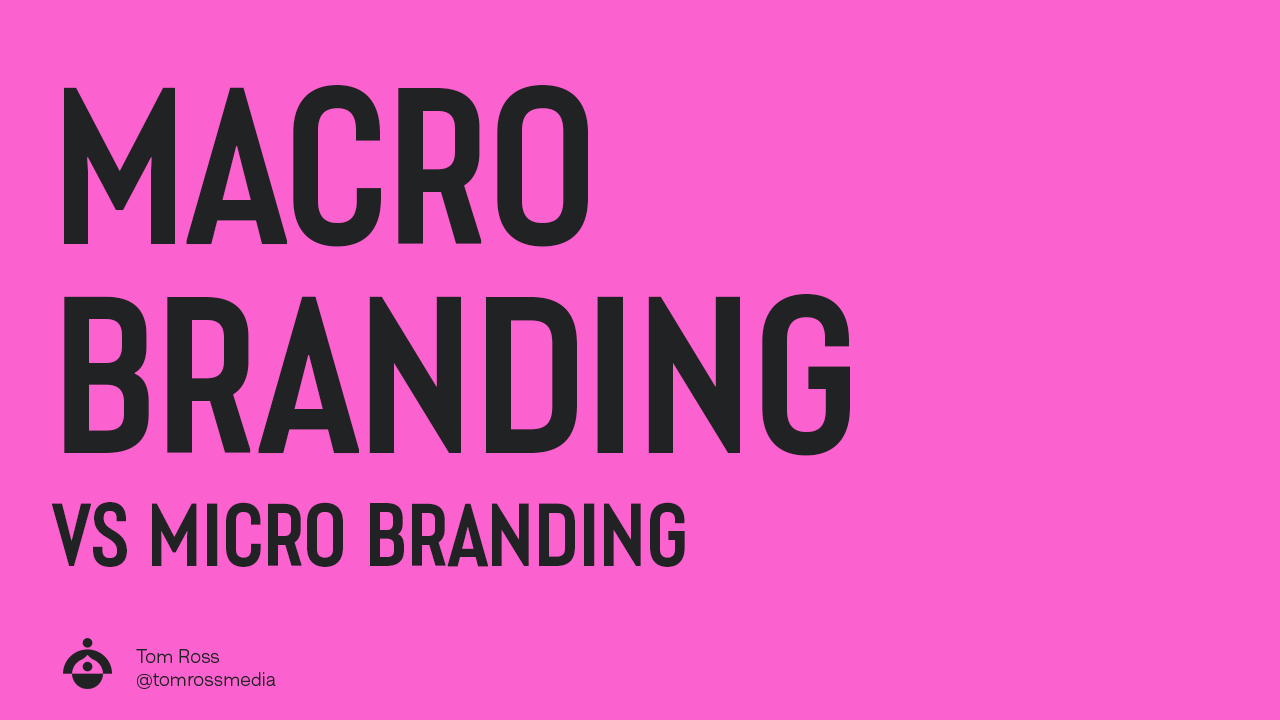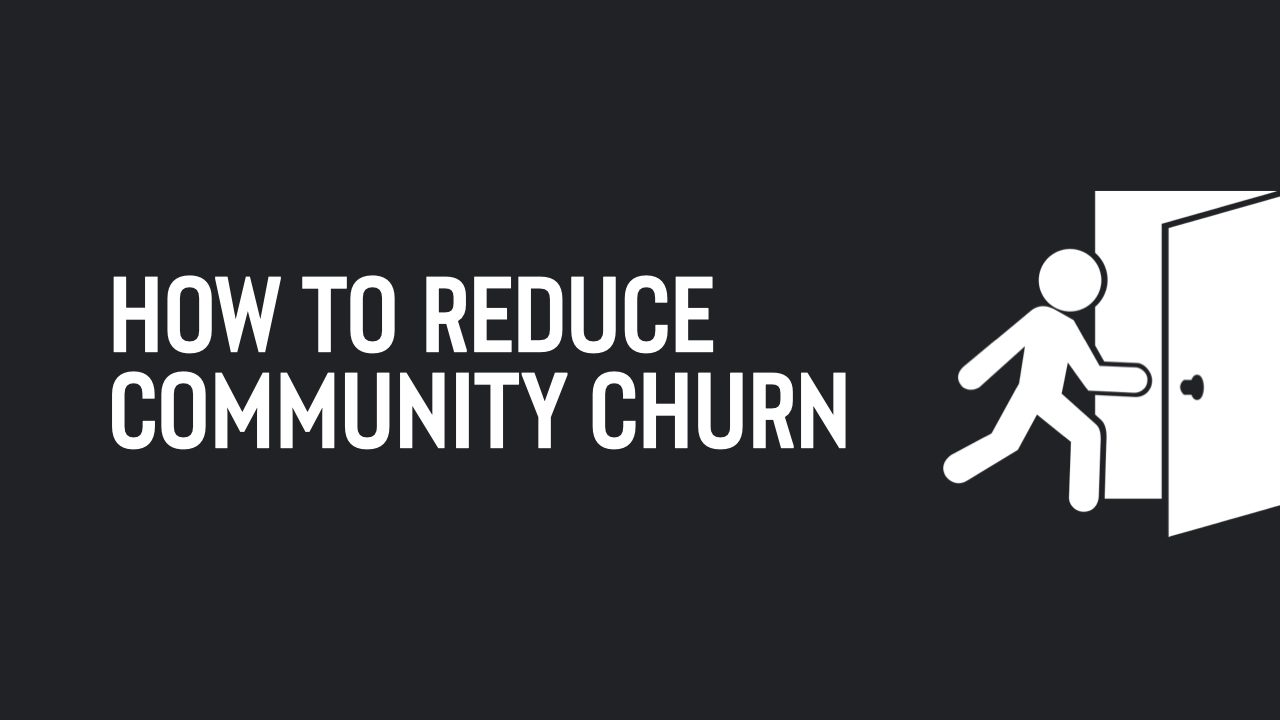
I’m becoming increasingly obsessed with this concept. I believe it’s one of the core pillars of fostering an engaged online community. So, today I want to share how you can implement Macro and Micro branding in your business.
If you are in a rush, here are the key takeaways from this article:
- Macro Branding vs Micro Branding
- Focused vs Multi-faceted
- Think about community leaders you follow
- This is how relationships work in real life
- How do I remain focused on my brand but varied in my content?
- How do I share about myself when I feel intimidated by it?
- Connect with someone, not everyone
Macro Branding vs Micro Branding
Macro Branding: The top-level definition of what you do. You may be ‘an artist’, ‘a consultant’, ‘a singer’ etc…
Micro Branding: The huge collection of little idiosyncrasies that make you who you are. Your hobbies, interests, passions, lifestyle, sense of humour, morals, personality etc…
Focused vs Multi-faceted
There’s a degree of friction between how you should approach these two concepts.
Your macro-branding (what you do) benefits from conviction and focus. To give an example, I’m not talking about everything under the sun, I’m specifically teaching ‘community building’. I’m positioning my brand very intentionally as ‘the community building guy’.
In this sense, it’s not only acceptable, but often beneficial to be narrow, one-dimension and specialised, in your professional endeavours.
With micro branding, by contrast, this is your place to showcase what a multi-faceted human being you really are. Nobody likes one-dimension people. Every meet someone that only talks about one topic, and never deviates? It’s exhausting. It’s boring.
Your micro branding therefore, is your opportunity to share your quirks and unique personality traits with your community, in all their varied glory. In my book, I interviewed dozens of successful community builders, and so many of them cited how their community are primarily drawn to them for ‘human’ reasons. Their shared interests. Their vulnerability. Their style of humour. Their character. This is what really fosters deep connection.
My friend Becca Courtice is known as an expert letterer, but also as a queen of puns, and her audience delight in her cheesy jokes. (As a fellow lover of puns, we bonded over this, and exchange a couple each time we chat).
My friend James Martin is a pro at sharing his life with his community. They literally feel like they know him, despite only receiving segments of his life through a screen. He shares everything from landscaping his garden, to his past struggles with drugs and family. One day he’ll share a vulnerable moment, the next he’ll invite you to delight in an inside joke, or personal break-through.
These community builders are not the exception. The more folk I speak with, the more I realise how these seemingly innocuous shared moments could be the key to it all!
Think about community leaders you follow
If you’ve read my book, you’ll know that I shared my fandom of The Rock. When I ask myself why I’ve followed him for years, is it the fact he’s a Hollywood movie star? Not really! It’s the little moments of his character that I resonate with. It’s his kindness towards his crew. It’s his work ethic. It’s his softer side with his family. It’s his brotherly banter with Kevin Hart. It’s his epic cheat meals. Each time he shares a piece of himself, if it resonates with me, I feel a tiny bit more connected to him and his brand.
This is how relationships work in real life
Maybe this makes me a shitty friend, but with my core friendship group, I genuinely find it hard to define what half of them do professionally. I have a general idea, but would probably do a terrible job of explaining their job role in any real depth. Think Chandler out of friends “he’s a transponster!”. The point is, none of us really care. We connect over our shared passions and interests. A shared sense of humour and values.
If all you share with your community is ‘work mode’ then you’re literally making it impossible for them to connect with you as a human being.
And that human connection is the key to them giving a crap. It’s hard to feel deep loyalty to a job title. It’s easy to feel loyalty towards a real, open, flawed person.
2 common concerns people often deal with:
When I’ve shared this concept online, people get it, but there are a couple of concerns. Let me address these below:
How do I remain focused on my brand but varied in my content?
It’s all about the time and the place. I’m not suggesting that your focused Instagram feed should become an endless slew of personal shares and food photos. You should absolutely be focused in your professional content. However… there are ways to weave in your personality:
- Use stories. These are designed for more personal, spontaneous content than your main feed.
- Use post descriptions. Fitness influencer Jordan Syatt frequently weaves his love of Harry Potter into his post descriptions, making them informative, but also addressing his community ‘whatsup Muggles!?’
- Go Live. It’s a great way to share your core value proposition, but also let your natural personality shine through.
- Be less precious about your feed. Whilst your feed should undoubtedly maintain some level of focus, it’s not the end of the world to share the odd personal insight or piece of content there. I shared when I got engaged, when we got a puppy etc… Did people unfollow in their droves? Absolutely not, they engaged like crazy, celebrating with us and enjoying a greater insight into my life.
How do I share about myself when I feel intimidated by it?
I totally understand and empathise with this fear. I had it myself for years. However, I promise, if I was able to overcome it and reap the rewards, you can too! Here’s what I recommend:
- Start small. Like anything new and scary, ease yourself in. There’s a huge difference between going live in front of hundreds of people and sharing a piece of your day in your story.
- Share something other than your face. You don’t have to talk to camera to share your micro-branding moments. Take a photo of your favourite lunch, screenshot your current favourite song on Spotify, write some text in your stories about something on your mind.
- Realise it gets easier over time. In my book, I discuss how I went from a nervous, trembling mess, who couldn’t shoot a 15 second video for Instagram, to speaking live in front of 2000 people, comfortably. I was nervous on my first driving lesson too, now I don’t think about it as I’m driving.
Connect with someone, not everyone
Micro branding is not about connecting with everyone, every-time. That’s not how human connection works in real life either. Some people will share a hobby, other’s may not care less about it. The point of sharing more of yourself, is that you’re creating more opportunities for connection with your community.
When I share a favourite new recipe, 12 people respond and let me know they’re going to try it.
When I share Dakota our puppy, the dog lovers in my community respond in droves.
When I share a clip of me learning piano, the musicians in my community reach out and connect.
If I shared nothing, there would be no opportunity for connection. I would be a digital hermit.
Don’t shut yourself off from the world. Open up.






